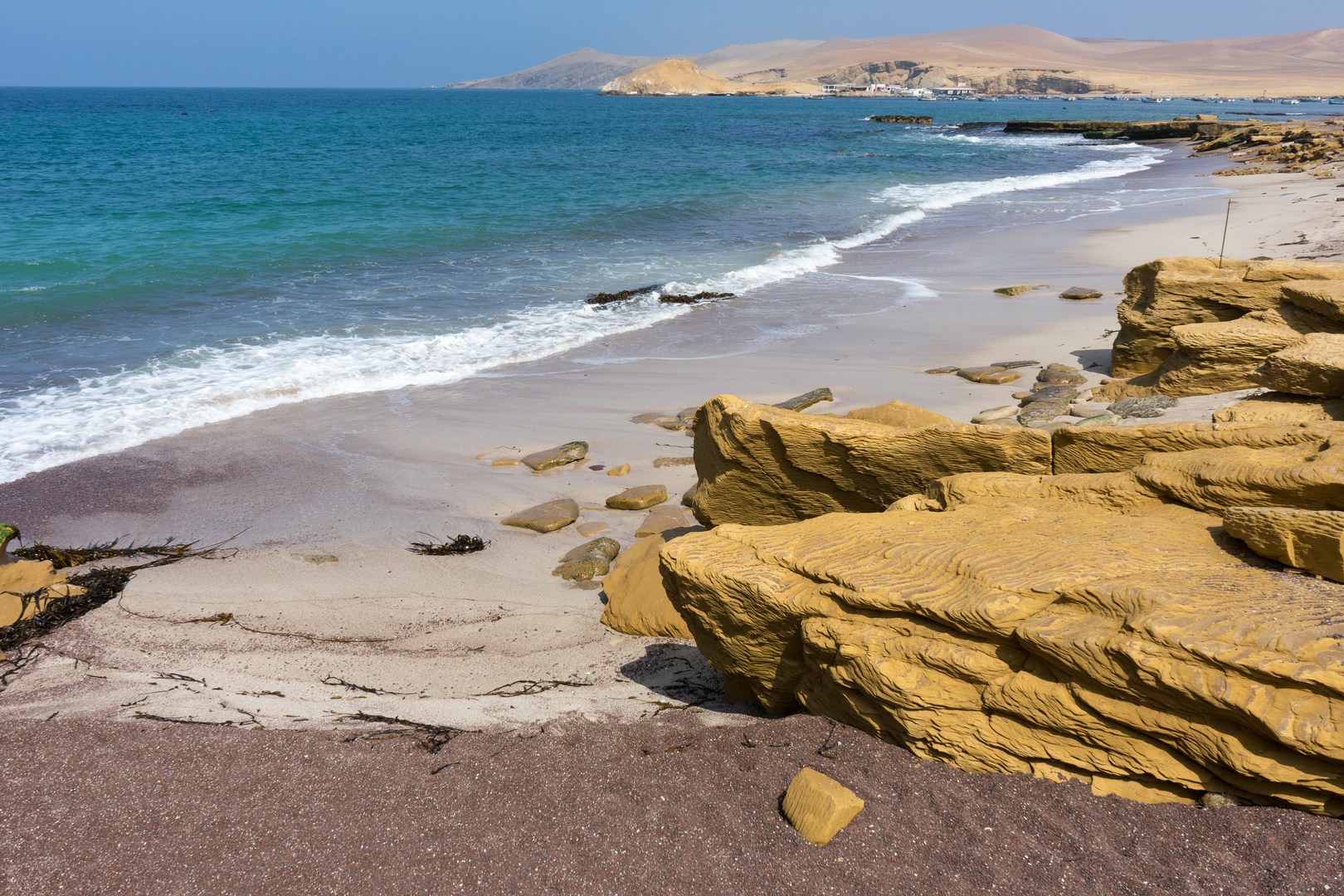You are here
Overview | Beaches | Hiking | Biking
Paracas National Reserve Overview
The Paracas Peninsula of Peru is one of the driest places in the country. This extreme desert receives only about a millimeter of rainfall annually, on average, but years can pass without any rain at all. The ground is completely bare and void of any plant life, but beautifully painted in warm colors by wind-worn soil and stone. Burnt hills and orange cliffs stunningly juxtapose the deep blue of the Pacific. Views abound over bare land and open ocean, and secluded sand beaches hide among the cliffs.
Despite the harshness of this desert, it sustains life. People settled here long ago, surviving from fishing and seasonal water flowing from distant mountains. The Paracas people lived here more than 2,000 years ago, and other cultures preceded them. The names of many landmarks in the reserve come from ancient legends that predate even the Incas. Playa Supay, for example, is titled after a god-demon who presides over the underworld in indigenous mythology.
Today, Paracas National Reserve (Reserva Nacional de Paracas) encompasses much of the peninsula and marine environment offshore. Within the preserve is a paved loop road, some unpaved spurs and cutoffs, and a few walking paths. Informative signs are present at most points of interest, which is not so common for parks in Peru and very nice to have. When wandering the preserve, stick to well-traveled roads and trails. Because plants don't grow here and finer soils are swept away by the wind, tracks scar the surface for a very long time.
Wildlife is mostly limited to marine animals and birds, but there are many of them. You can spot unique species like the Peruvian booby, Peruvian pelican, Inca tern, and maybe even the Chilean flamingo on migration. Ocean dwellers that you'll be lucky to spot include sea lions, fur seals, dolphins, whales, and marine otters (a rare variety of sea otter).
The reserve is located a short distance from the town of Paracas, also known as El Chaco. It thrives on fishing and tourism, boasting a variety of accommodations and seafood restaurants. Along the main street are many offices where you can book tours of the reserve, but taxi drivers are usually willing to take you as well, and may even serve as your tour guide. Alternatively, you can visit on your own by private car or bicycle. When entering the park, stop at the station for information and to pay the entry fee.
Beaches
- Playa Supay: Very long beach beneath tall sea cliffs, good for beachcombing and used by locals for fishing.
- Playa Yumaque: Wide, sandy beach that is not so great for swimming but allows overnight camping.
- Playa Roja: Small but very unique beach, with sand of deep red color and majestic views to distant sea cliffs.
- Playa El Raspón: Popular cove beach for swimming and sunbathing.
- Playa La Mina: Perhaps the finest swimming beach in Paracas Reserve, La Mina is a small cove tucked among tall cliffs, with calm waves and soft sand.
Hiking
There are few marked trails in the reserve, but you will occasionally come across a worn track or sign noting a trail. Most of these are poorly marked but short, and it's easy to keep your bearings on the wide-open landscape. You can walk along any of the roads, paved or unpaved, that crisscross the reserve as well. Impassable sea cliffs limit hiking along most beaches to pretty short distances. An exception is Playa Supay, where it's possible to walk quite far to the south at low tide.
Biking
A bicycle is a great way to get around Paracas National Reserve. Most visitors come by motorized vehicle, but it is very bikeable. Various companies in the town of Paracas rent bicycles. The main loop from town through the reserve is approximately 33 kilometers (20.5 mi), not counting side trips to various overlooks and beaches. You can complete the loop and see quite a lot in just half a day. Start early for cooler temperatures and lighter traffic.





Comments
Sign In and share them.